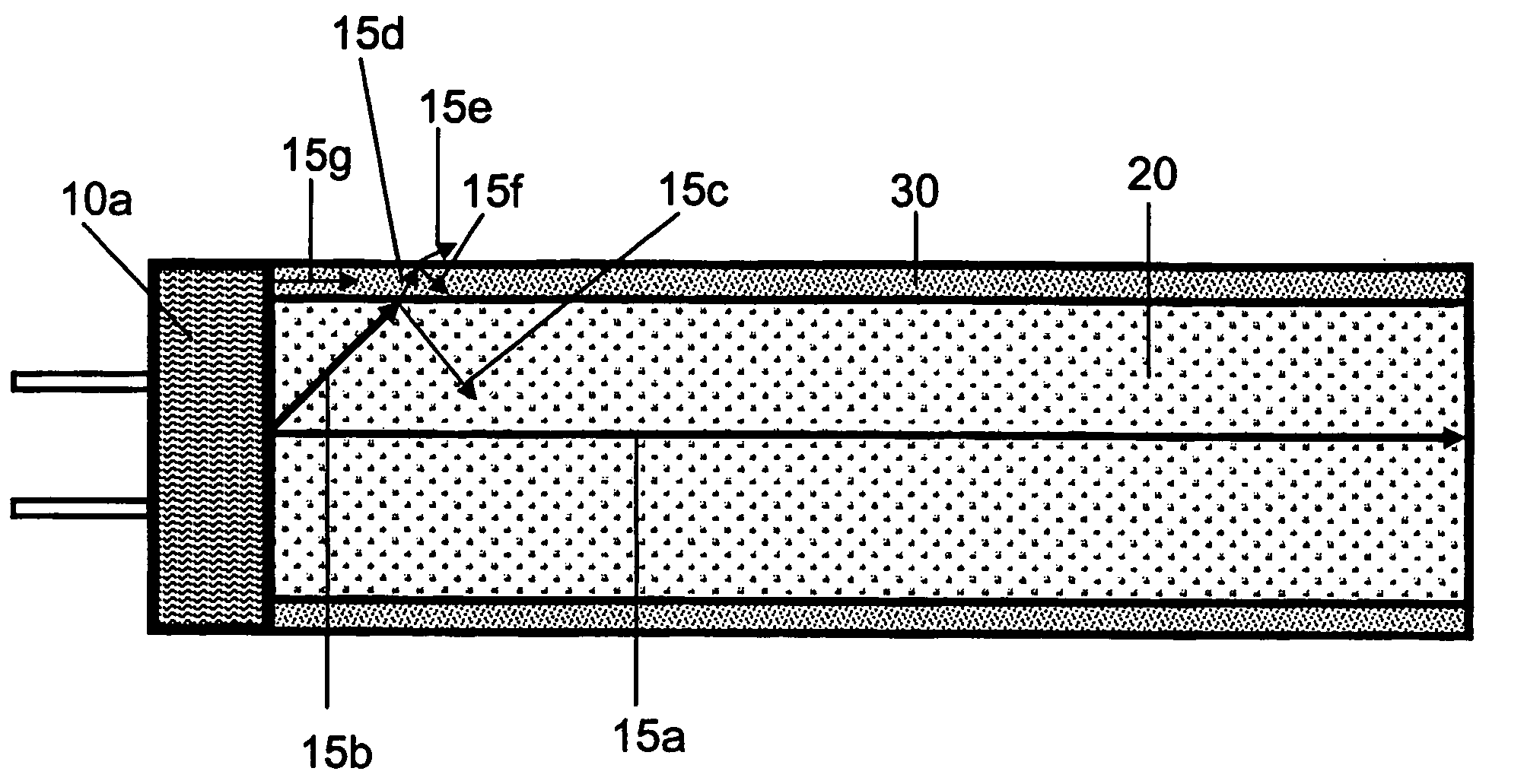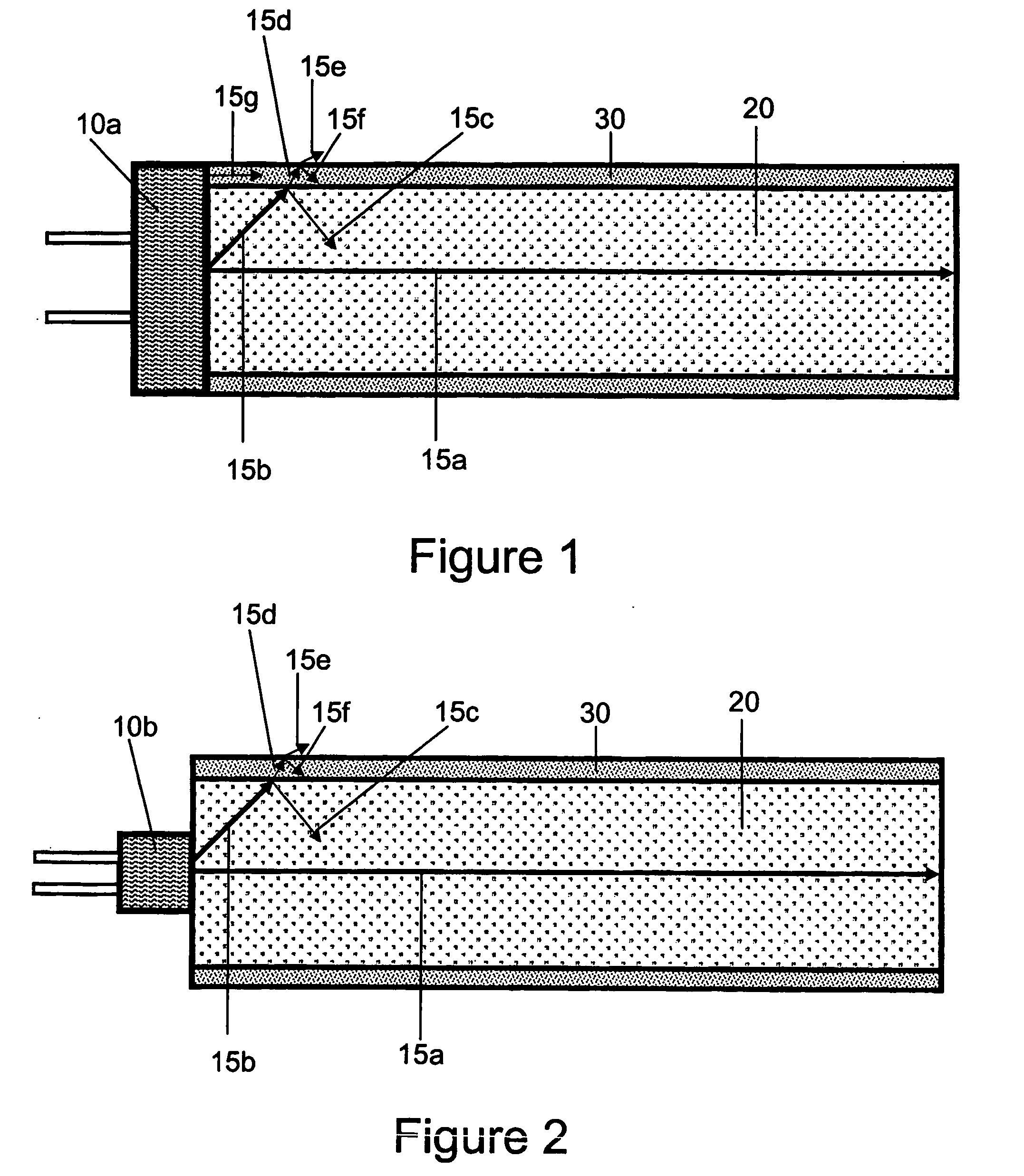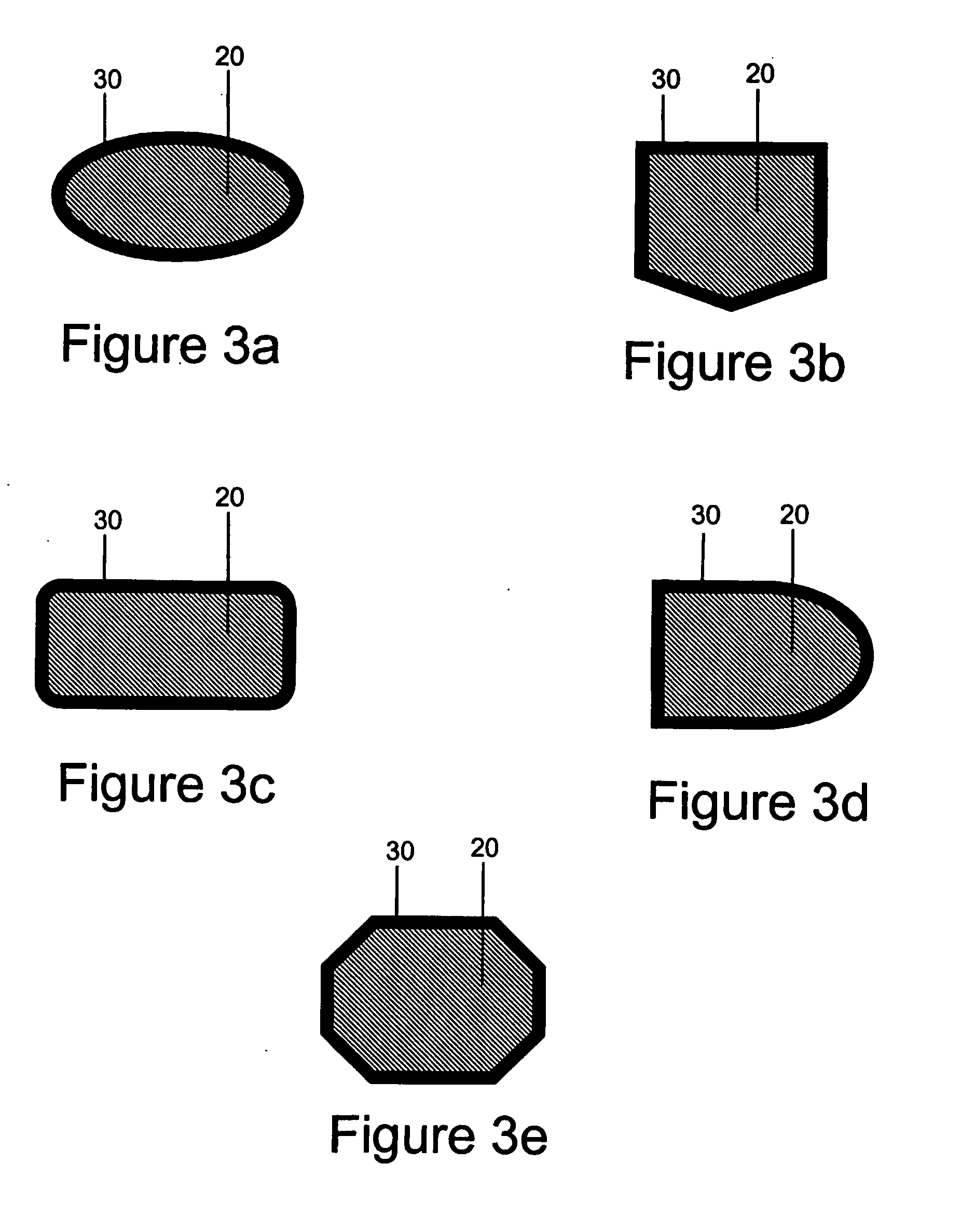Light-emitting form exhibiting an aura
- Summary
- Abstract
- Description
- Claims
- Application Information
AI Technical Summary
Benefits of technology
Problems solved by technology
Method used
Image
Examples
example 1
[0110] An ether-based polyurethane tubing, 100 cm in length, with 6.5 mm inside diameter and 8.0 mm outside diameter was filled with a very viscous, water clear, purified oil supplied by STE Oil Company of San Marcos, Tex. One Agilent LED (HLMT-PG00), San Jose, Calif. was inserted at each end of the tube. LEDs were immersed and were in direct contact with the oil. When LEDs were lit, the light-emitting device glowed uniformly along its entire length and had an aura very similar to neon, although not as bright. The polyurethane tubing's refractive index was reported at 1.54 and the oil's refractive index was lower.
example 2
[0111] Example 1 was repeated with a longer length tubing (e.g. 200 cm). The device as expected did not exhibit a uniform glow throughout the entire length of the device and was not as bright as Example 1.
example 3
[0112] To overcome the shortcoming of Example 2, Example 2 was repeated except Omron red 2MDR01-85R1A LEDs, Schaumburg, Ill., with higher intensity and a narrower viewing angle as compared to Agilent LED (HLMT-PG00) were used. The light-emitting device glowed uniformly along its entire length and had an aura very similar to neon, although not as bright.
PUM
| Property | Measurement | Unit |
|---|---|---|
| Length | aaaaa | aaaaa |
| Length | aaaaa | aaaaa |
| Fraction | aaaaa | aaaaa |
Abstract
Description
Claims
Application Information
 Login to View More
Login to View More - R&D
- Intellectual Property
- Life Sciences
- Materials
- Tech Scout
- Unparalleled Data Quality
- Higher Quality Content
- 60% Fewer Hallucinations
Browse by: Latest US Patents, China's latest patents, Technical Efficacy Thesaurus, Application Domain, Technology Topic, Popular Technical Reports.
© 2025 PatSnap. All rights reserved.Legal|Privacy policy|Modern Slavery Act Transparency Statement|Sitemap|About US| Contact US: help@patsnap.com



